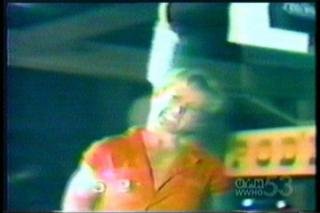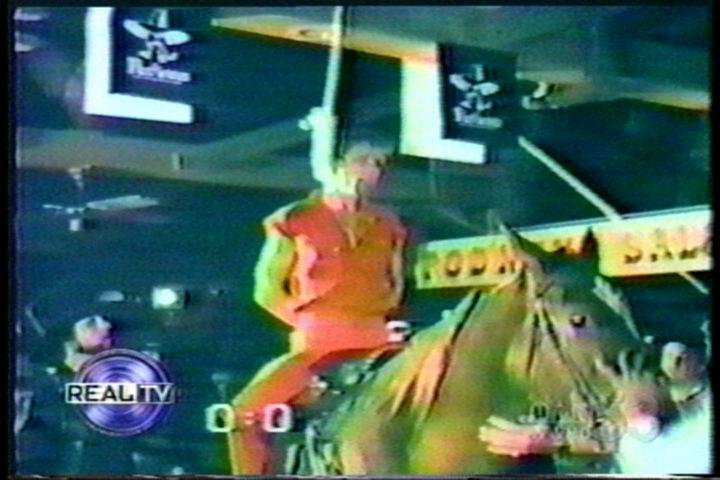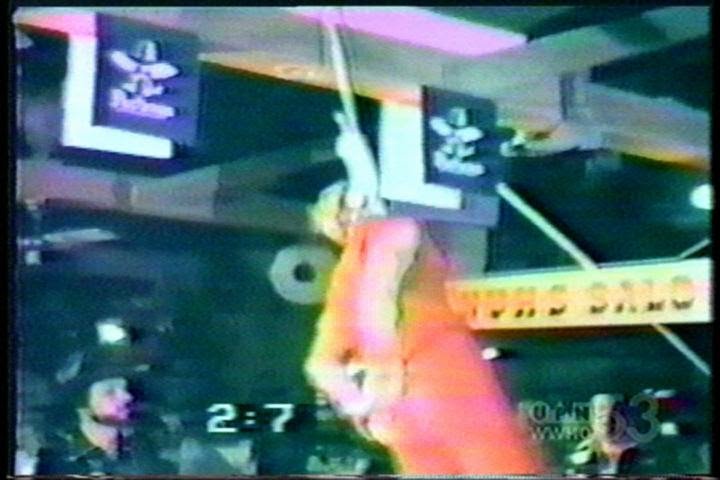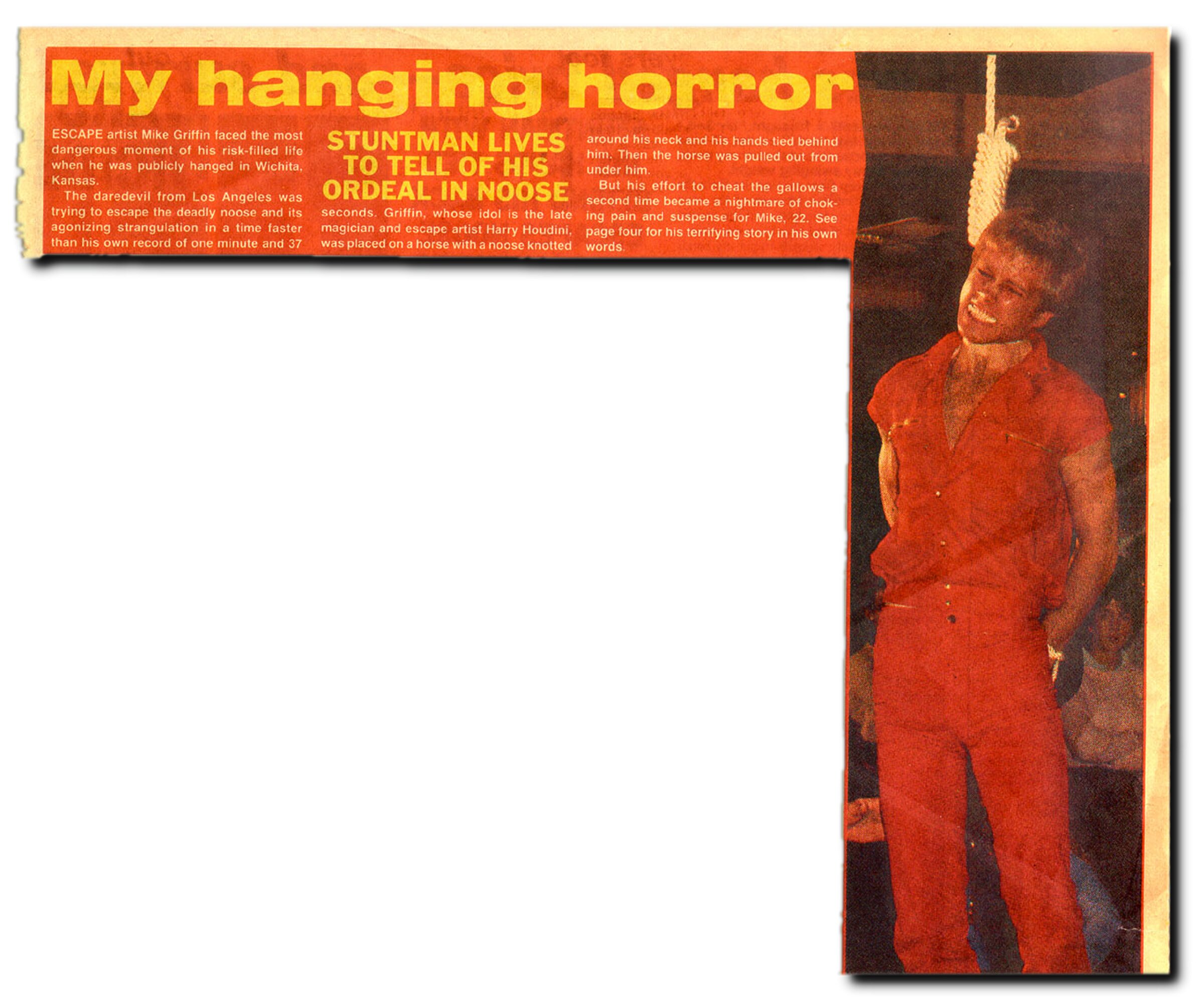There Is One Escape That Terrified Houdini Enough To Back The Death-Defier Down
Escape Artist Michael Griffin Survived A Hanging From The Back Of A Horse That Even Magician Houdini Refused To Dare - Becoming The Only Human To Survive The Grisly Fate Two Times.





COLUMBUS, April 11, 2022 /Outrajus Productions/ -- According to most magic historians and Houdini purists, unaffiliated or prejudiced toward the contemporary escapology performer, there is never been set forth anything new or substantive that Houdini would be unwilling to perform, yet we have never had a reference of the master swinging from a hangman's noose. One of the most fantastic escapes ever performed was done in 1984 by Michael Griffin when he escaped from a thirteen-knot hangman's noose in 52 seconds, receiving national coverage for his exploit. In the escape, Michael's hands were tied behind his back while he sat high in the saddle. A noose was placed around his neck and tightened.
Just like in an old western, the horse was shooed away, and, in the words of Griffin, “the pain was terrible. I thought ‘my god, I broke off my rear teeth,’ as the 13-knot hangman’s noose closed shut on my neck, tightened by my swinging weight.”(globe, 31 Jan. ’84). Michael Griffin became the first person to ever survive a public hanging. What made this particular escape stunt so dynamic was not Griffin's fortitude in performing such a daring feat, nor that he was successful in accomplishing this surely life challenging task, but that albeit the fact the danger was real, there was a pure and unadulterated simplicity in the concept that was a compulsive variant on a theme. It is a theme that has been brought forth in many movies and throughout the folklore of the settlement of the American West.
While all escape artists disavow the very idea of escaping from the hangman’s noose, calling it “ridiculous” and “stupid”, Griffin, the only escapist known to perform this spectacle, believes it to be one of the most brilliant concepts he has ever had. His reason for performing the escape was the pure horror of the nightmarish vision, laden with the grotesque obduration of an innocent-looking man swinging from the gallows.
At the age of 18, five years before the hanging, Griffin embarked on discovering the solution to one of the greatest puzzles ever to transfix the mind of any serious post-Houdini escapologist. In 1938, a straitjacket designed by the J.T. Posey company was guaranteed escape-proof when correctly applied to its would-be victim. Nearly forty years later, Michael, the son of distinguished psychiatrist doctor Richard G. Griffin, became the first person to successfully master the secrets of the posey jacket, after he'd been restrained in the regulation manner, as prescribed by the Posey company. in the years since Griffin remains the only known person to have successfully made his escape from the Posey jacket when applied correctly.
According to Rudy Steffish, author of the book Conversations with Harry: A Study of Contemporary Escape Artists, Griffin is hard to categorize. “Most escape artists fall into one of two groups. They are illusionists using the appearance of danger to recreate Houdini, or they are legitimate in that they will not use trick handcuffs and such to perform an escape; however, Griffin doesn’t really fit into either clique. Whereas he uses the second group's methods for many escapes, he isn’t some locksmith on stage picking open cuffs, nor is he some magician who has added an illusion of danger to bolster his manhood I think Griffin fits into his own category…maybe something defined as an ‘escape performer’. Yet, that isn’t quite fair, because not only does Griffin want to get out of the restraints, he wants you to get into the restraints with him in your own mind so you can feel the struggle. The being placed into the restraints for Griffin seems like it’s more of what he is about, with the escape being an afterthought.”
Griffin maintains a strong belief in what he calls “the phantasm of believability”, that is the concept that everything an escape artist does must be done so in a non-spurious and logical manner, but must also maintain an appearance that the performer on stage is creating a situation that only he can release himself. He told the Los Angeles Times in 1991, “its primary reality. I know that when I come back from a tour, I’ve got cuts and bruises all over me. every single night I don't know what's going to happen to me.”
Griffin is at the top of the near-extinct breed of contemporary escapists who not only master the technical know-how to become an escape artist, but also the skills of showmanship to become a true escape performer. Michaels escapes have logical reasoning and he is not just another man on stage getting out of a straitjacket. He feels it is up to him to educate the audience about the straitjacket, such as its uses, how its made and why someone would feel a need to get on stage and escape from the jacket. It appears after a Griffin lecture on the subject, the straitjacket escape actually becomes the learning tool and there is meaning to the jacket escape.
Another facet of the Griffin show that makes it oddly interesting, is his method of restraint. Unlike anyone else, Griffin revels in allowing the audience to watch in the trussing up process. In fact, Griffin makes the restraining time of the show just as important as the actual escape. For this reason, he tends to perform more technical escapes that take less time to bind him, because, according to him, “if it takes a long, unfocused time for a performer to be restrained, the audience will get lost in boredom during the process. that audience will then still be trying to find its way back from the boredom during the performance of the escape.”
One of Griffin's main focuses in the field of escape has become the “Challenge Escape”. one of the first types of challenges Michael embarked upon was the challenge handcuff release. He felt a need to add something different to the basic escape, and instead of looking at the hokiness of the full view handcuff release, or the very lacking of entertainment value of climbing behind the curtain, Michael came up with the idea of having the cuffs placed on him and then climbing inside of a large, airtight bag, which is then closed. Griffin must make his escape before he falls victim to suffocation. Griffin challenges actual highly-trained police officers to restrain and immobilize him, as opposed to using them only as window dressing to “examine the cuffs”. This makes the production real, and hence, he has created “Primary Reality”.
While the idea of doing a handcuff escape from inside of a bag is not new, Griffin added originality to the stunt, by first using challenge restraints, and not his own, and secondly by being honest in the escape, and not referring to the large bag as a “Mailbag”. Michael has escaped from U.S. Postal regulation mailbags, but the bag used in the challenge cuff act is a large sack. by presenting the challenge in full view, but while maintaining the hidden aspect of the cuff release, Michael has been able to redefine the challenge handcuff act.
Michael also has a blanketed challenge escape, offering a large sum of money to the group or individual who can restrain him in a rational way so that escape would be impossible. Many have stepped forward to accept this challenge, but so far, the money has remained in Griffin's possession. One of the most difficult of the challenges Griffin has faced was the one set forth by the Baldauf lumber company. The box was not built to the specifications set forth in the challenge, and Baldauf lumber had to drill an air hole into the lid of the box after Griffin had already been restrained inside. Michael ended up with a gaping hole in his back, yet performed the escape to his spectacular end. It taught him a valuable lesson in challenge escapes, yet, needless to say, Griffin evaded this situation and Baldauf lumber was unable to collect the bounty.
Among the many other escapes, a Griffin experience will involve include the German “Transporkette” chain, (as opposed to the “Siberian” chain available at many magic shops) which is a legitimate restraint actually used in Germany, various rope ties, including an interesting escape from the wheel of a loaded cannon, a U.S. Navy seabag from days of old, and the unique Maniac Mitts. One element you won't see as part of Michael’s stage show, however, is any escape involving imminent death or doom, as Griffin feels a true entertainer doesn't need to threaten his audience with that type of cheap, theatrical fear. The factor of not knowing who will be in your audience which may include small children is another reason Griffin won't attempt to “kill” himself on stage.
Griffin has also escaped from numerous local, county, state, and federal prisons, and escaped from under the water of many lakes and rivers, including the mighty Ohio river after it had frozen over and a hole had to be cut through it. In doing underwater publicity escapes, Griffin believes the audience is aware of the possibility of him drowning, and by viewing it, the audience takes responsibility for whatever may be witnessed.
Michael Griffin is widely regarded as an internationally acknowledged expert in the study of handcuffs, leg irons, and other odd and varied restraining devices. He has one of the largest privately-owned collections of such memorabilia in North America.
Michael has also done non-escapes, that have an element of danger, including his version of Russian Roulette, and the East Indian Needle trick, which he performed on a national cable program, in what was described by one of the hosts as the most amazing variety act the show had ever featured.
Michael has also appeared on other television programs, including a show in which he was restrained by legendary funny man, the late James Coco. It was after another appearance on the national daytime variety style program griffin was nicknamed the “Boss of Bondage” by no less than the “Boss” himself, Mr. Bruce Springsteen.
In 1993, Michael Griffin earned the very prestigious International Magic Awards for the best Escape Artist. He was invited to perform on the awards show, where he accepted a challenge from Orange County, FL. Sheriff’s department to be fastened into a pair of handcuffs, a length of chain, a pair of leg irons and a 60 lb. ball attached to his neck and shoulders. He was lowered into the lagoon headfirst hanging by his ankles at Universal Studios in Florida. Griffin was almost done in by this challenge as he was drug across the bottom, and in the process, kicked up silt, which nearly blinded and disoriented him. Fortunately, he was able to make the escape in 30 seconds and resurface, before the unthinkable happened.
The risk factor is something Michael believes a responsible escape artist will eliminate in a show because an escape artist who gets killed only hurts all escape performers. Griffin, however, has suffered minor injuries that come with the territory of performing with legitimate restraints.
Kay Monroe - Van Meter, a writer from Ohio once cantered, “the mythical animal, the ‘Griffin’, had the head and wings of an eagle, and the body and legs of a lion. It possessed keen sight, the strength to fly forever and the power and agility to overcome any obstacle. Today we have a human ‘Griffin’, the escape artist who has developed and is setting a new standard in the scope and challenges of escape artistry and performance. like the legendary beast, Michael Griffin possesses the physical and mental attributes to perform such amazing feats of escape that even the most dubious onlookers have been totally amazed and awed.”
One of Griffin's other important attributes is his philosophy and commitment to representing himself as a role-model worthy of the respect and admiration of today's despondent youth. Michael maintains a drug-free and non-alcoholic lifestyle believing in an old-fashioned work ethic and keeps himself attached to a clean life concept. For all of this, Michael Griffin hopes his crowning achievement will be the title “America's Escape Hero”.